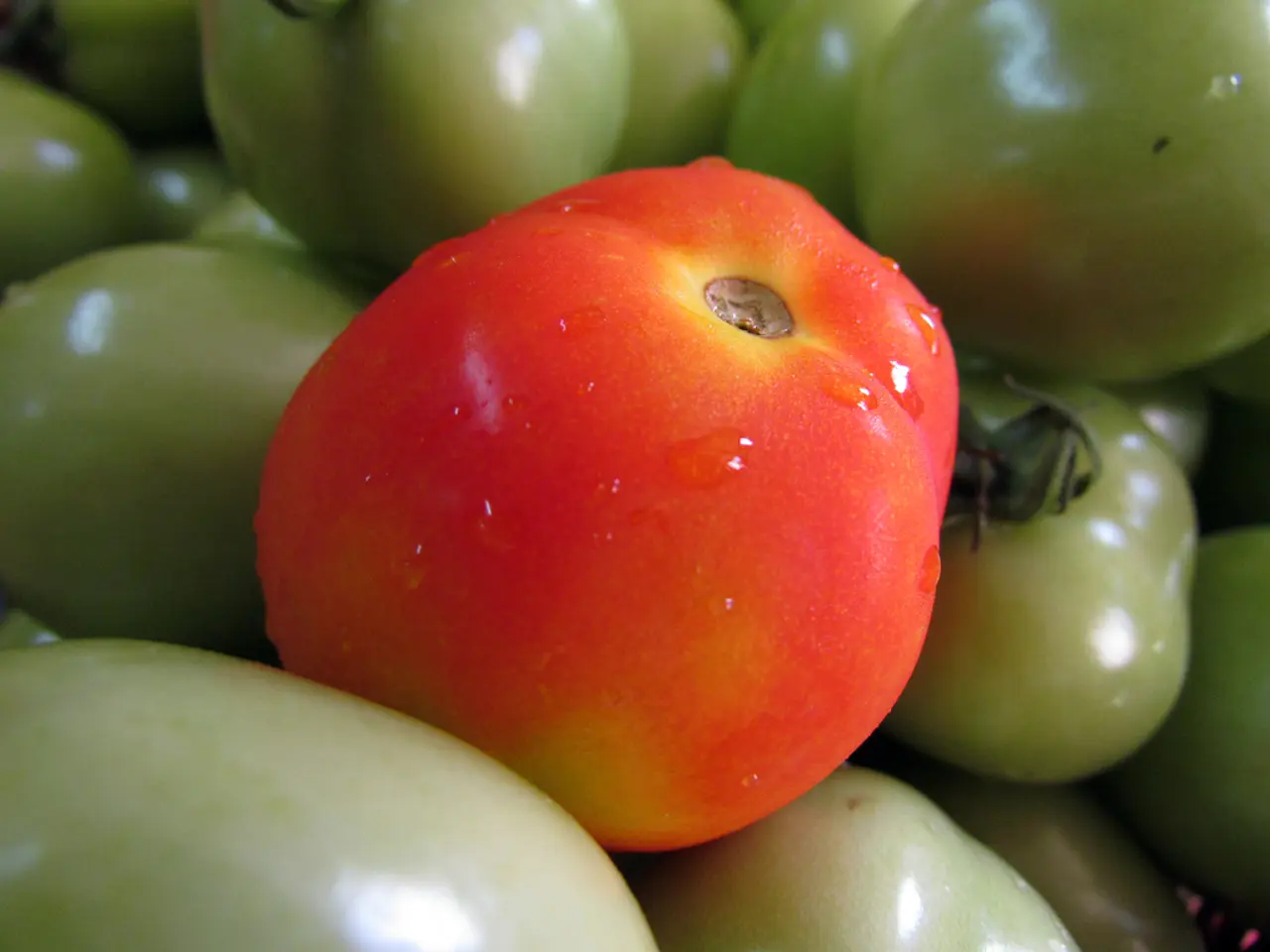Struggling with tomato yields? These five typical errors could be sabotaging your produce.
In the quest for a bountiful and flavourful tomato harvest, it is essential to avoid common growing mistakes. Here are the top errors and their corrections to promote healthy growth and maximize both yield and flavour.
One of the most common errors is watering improperly. Overwatering or watering too frequently can lead to problems such as yellowing leaves, wilting, split fruit, and bumpy or blistered leaves. To avoid this, water deeply but infrequently, allowing the top 2-3 inches of soil to dry out before watering again. This encourages roots to grow deeper, making plants more drought-resistant. When watering, avoid wetting the leaves to reduce disease risks.
Another mistake is planting tomatoes in poor locations. Growing tomatoes in shady areas or in soil that is unhealthy or compacted stunts growth and reduces yield. To prevent this, choose a spot that receives 6-8 hours of direct sunlight daily and ensures the soil is well-drained and nutrient-rich. Avoid areas with heavy foot traffic or compacted soil near the root zone.
Leaving soil bare around plants is another error that can lead to moisture loss, weed growth, and temperature fluctuations that stress plants. To correct this, apply mulch around the base of each plant to conserve moisture, regulate soil temperature, and suppress weeds. Mulching also protects roots from damage.
Damaging roots by stepping near plants is another mistake that can hinder nutrient and water absorption. To avoid this, avoid disturbing the soil or stepping within 12 inches of your tomato plants. Keep the soil loose and undisturbed to allow healthy root growth.
Ignoring early signs of disease is another mistake that can ruin a harvest. Neglecting to keep leaves dry and failing to detect early symptoms of diseases like tomato blight can lead to a poor harvest. To prevent this, water at the soil level and practice good garden hygiene. Prune lower leaves to improve air circulation and apply fungicides if necessary to prevent or treat disease.
Picking tomatoes prematurely is another mistake that sacrifices flavour and texture. Wait until tomatoes are fully ripe on the vine for the best taste, texture, and shelf life. Different varieties may have different cues for ripeness, so learn the specific signs for your type of tomato.
By avoiding these mistakes and following these corrections, gardeners can promote healthy growth and maximize both yield and flavour in their tomato harvest. Regular checking for pests is important to catch infestations early and prevent damage to tomato plants. Feeding tomatoes once the first flowers begin to form fruit is recommended, using a plant food specifically for tomatoes. Tomatoes have a very great need for potassium when the fruits form and ripen, so high potassium tomato feeds are ideal for flavoursome crops of quick-ripening tomatoes.
Tomatoes grown as bush varieties should not have their side shoots removed, while on cordon tomatoes, the plant forms one vertical stem. Regular and consistent watering is important for tomatoes to take up nutrients and produce a good harvest, with irregular watering leading to problems such as split fruit, blossom end rot, and curling leaves. Watering tomatoes in the early morning or evening can help prevent water evaporation.
In conclusion, with careful attention to these common growing mistakes and their corrections, gardeners can enjoy a bountiful and flavourful tomato harvest.
Compacting the soil near the tomato plants' root zone can negatively impact their growth and yield, highlighting the importance of choosing a well-drained and nutrient-rich location for them. To enhance the taste, texture, and shelf life of tomatoes, avoid picking them prematurely and be mindful of their specific signs of ripeness. Proper mulching is crucial to conserve moisture, regulate soil temperature, and suppress weeds around tomato plants. Learning about companion planting could further benefit your home-and-garden lifestyle by promoting healthy growth in your food-and-drink garden, improving the overall flavor of your tomato harvest. Regularly checking for pests is vital to catch infestations early and maintain a bountiful and delicious tomato harvest.




